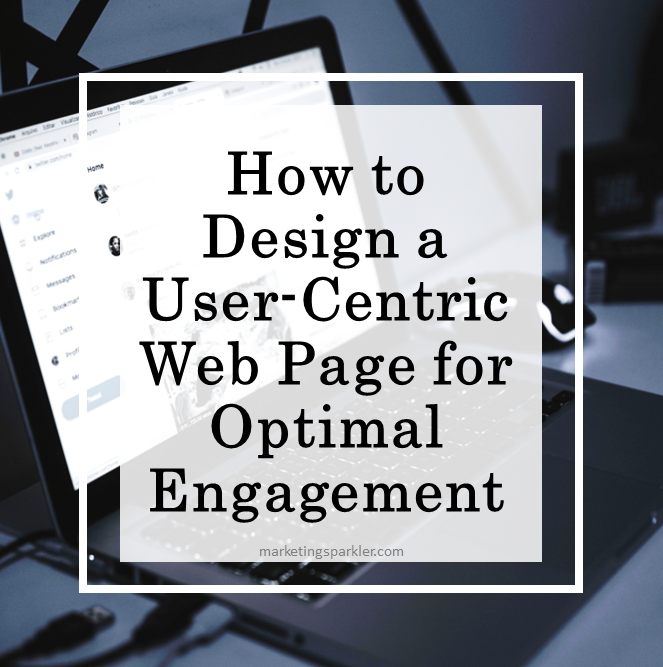If there’s any web design trend that will never go out of style, it’s user-friendliness. Being able to navigate a website easily and quickly is always a win-win for both customers and business owners. The customers can get what they want without getting lost in the maze, the business owners can earn from fast conversions and engagements.
So while it’s important to spend a big chunk of your budget on aesthetics, content, and customer service, you must never lose sight of your site’s user-friendliness. After all, all of your investments in looks won’t convert to cash once the customer leaves in seconds.
To get started in designing a user-friendly website, we must first understand what it is and its place in your business goals.
Beyond Aesthetics: How to Design a User-Centric Web Page for Optimal Engagement
What is a user-friendly website?
User-friendly websites take their customers’ persona and make them their priority. Any questions that might arise when they visit a website are always expected and met with answers laid out in a nice format. And in some cases, when they need more information, they are presented with menus and buttons that could get them to where they want to be.
In other words, a user-friendly website is user-centric. It’s not self-serving, meaning what the owner solely intends to present to the readers. In contrast, it understands the needs of the prospective customers the moment they land on the website, while browsing through content, and until they buy a product or click on a service.
Why do websites need to be user-friendly?
It’s not just a matter of display. User-friendliness has a role in the efficacy of a website. Here are some of the ways a user-friendly website helps your business goals.
User-friendly websites take their customers’ persona and make them their priority. But what does this mean, and why does your website need to be user-friendly? Click To Tweet1. To engage your audience
If it’s user-friendly, the customer is more likely to spend more time engaging with your site. They might read an article or two, share your visuals, or browse your product offerings longer than a not-so-user-friendly website.
2. To get more followers or customers
What’s the result of an engaged audience? Higher revenues. If you sell a product or a service on your website, the chances of your income increasing is higher when your audience spends more time on your website. Through this, they encounter your social approvals such as comments and reviews. And as a result, they buy things from your site.
3. To enhance brand reputation
Imagine your website as a digital ambassador for your brand. It’s a mirror reflecting your brand’s values, showing your customers that you respect their time and value their experience. A well-crafted, easy-to-navigate website can be a game-changer, significantly boosting your brand’s reputation and credibility. Having a well-designed website like a well-designed logo helps customers identify you from the competition.
As the Amazon founder, Jeff Bezos, once put it, “Your brand is what other people say about you when you’re not in the room.” A user-friendly website ensures that the conversation is always positive.
4. To improve SEO ranking
Now, let’s talk about SEO. Google, the search engine giant, has a soft spot for user-friendly websites. Elements like website speed, mobile optimization, and user engagement can dramatically influence your SEO ranking.
The higher your ranking, the more visibility you get, leading to a surge in traffic and potential conversions. It’s like being in the fast lane on the information superhighway. A study by Search Engine Journal supports this, showing that a well-structured, user-friendly website can improve your SEO ranking.
5. To reduce bounce rates
A user-friendly website is also your best defense against high bounce rates. This term refers to the percentage of visitors who exit your site after viewing only one page.
A low bounce rate is a good sign, indicating a well-structured, high-quality website. Digital marketing guru Neil Patel’s report provides a wealth of information on how enhancing the user-friendliness of your website can significantly reduce your bounce rate.
6. To increase customer retention
And what about customer retention? A website that’s easy to use and navigate is like a friendly guide, leading customers back to your business time and time again. This can result in higher customer loyalty and repeat business. In fact, a study by Bain & Company found that a mere 5% increase in customer retention can boost a company’s profitability by a whopping 75%.
A website that's easy to use and navigate is like a friendly guide, leading customers back to your business time and time again. Click To TweetTips to Make Your Website More User-Friendly
1. Speed
Think of website speed as the heartbeat of your user experience. A slow-loading website can frustrate users, causing them to abandon your site.
To keep your website’s pulse strong and steady, optimize images, use a reliable hosting service, and minimize the use of heavy scripts and plugins. A case study by Google reveals that a one-second delay in mobile load times can impact mobile conversions by up to 20%.
2. Navigation
Navigation is the compass of your website. A well-structured navigation menu can significantly enhance the user experience. It should be intuitive and straightforward, guiding users to their desired destination with ease.
A Nielsen Norman Group’s study finds that a clear, well-structured navigation menu can improve user engagement by up to 74%.
3. Clarity
Clarity is the lens through which users view your website. Your website should communicate its purpose clearly and quickly.
Users should be able to understand what your website is about and what they can do on it within a few seconds of landing on your page. The Nielsen Norman Group’s study shows that clear and concise statements have a 124% better usability than versions that don’t follow this guideline.
4. Mobile-Optimized
In today’s mobile age, a mobile-optimized website is a must. It not only improves user experience but also positively impacts your SEO ranking. It’s like having a friendly tour guide who adapts the tour to the visitor’s preferences.
A study by Google shows that 53% of mobile site visits are abandoned if pages take longer than 3 seconds to load.
5. Clear CTAs
Clear CTAs are the signposts on the road to user engagement. They guide your users on what to do next. They should be clear, concise, and compelling, strategically placed to guide your users through their journey and encourage them to take action.
According to a study from Unbounce, a well-placed and clear CTA can increase conversions by up to 20%.
6. Complete Contact Details
Complete contact details bridge you and your users. Providing complete and accurate contact details makes it easy for users to get in touch with you, increasing trust and credibility.
A study by KoiFish Creative reveals that 44% of website visitors will leave a company’s website if there’s no contact information given or easily visible.
By focusing on user experience, you can create a website that is not only visually appealing but also high-performing, leading to higher user engagement, improved SEO ranking, and increased conversions. Click To TweetFinal Thoughts
Designing a user-friendly website is an art that goes beyond aesthetics. It requires a deep understanding of your users’ needs and behaviors.
By focusing on user experience, you can create a website that is not only visually appealing but also high-performing, leading to higher user engagement, improved SEO ranking, and increased conversions.
Remember, a user-friendly website is an investment that can yield significant returns for your business.
Ciao,
Miss Kemya
This is a guest post from Janella Malapad, an outreach specialist at DesignCrowd. She spends her free time playing volleyball on the court, carrying enthusiasm, and embracing the love of the sport when she’s not lost in the captivating landscapes of poetry. You can reach her through LinkedIn or her email janella.malapad@designcrowd.com



